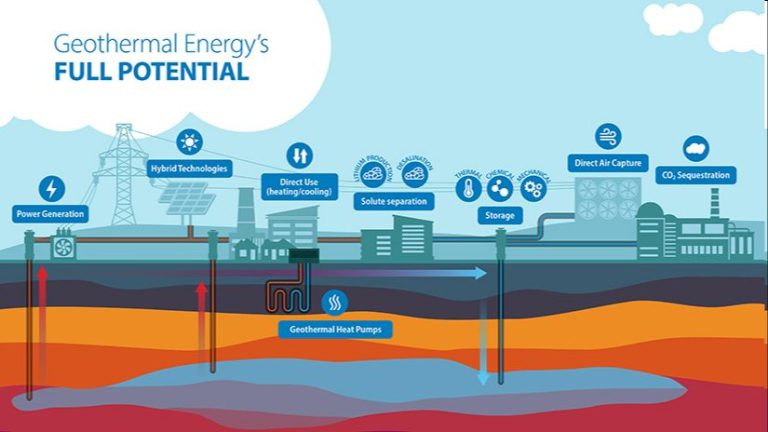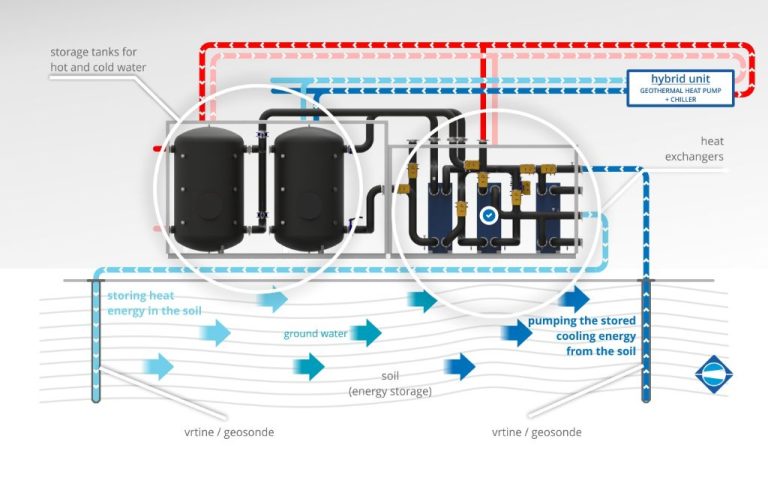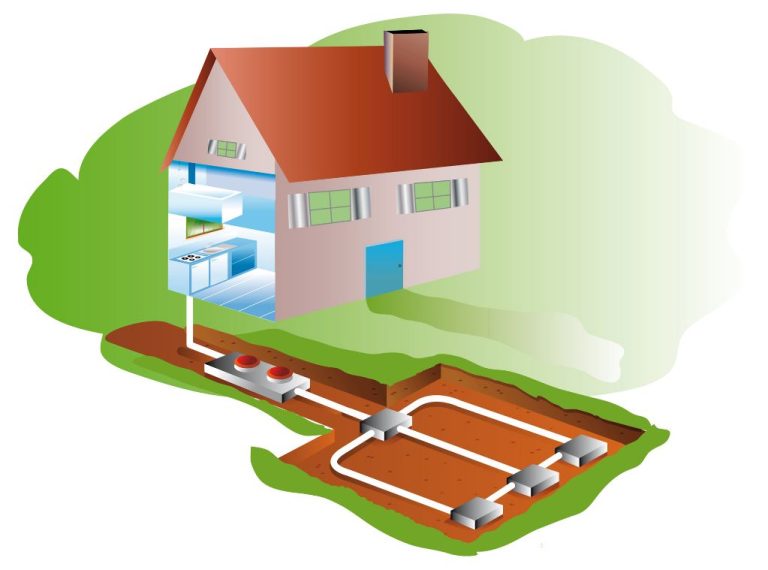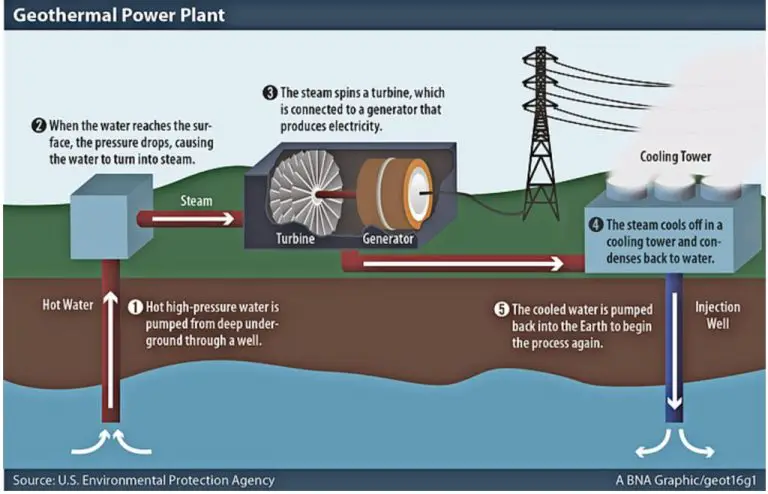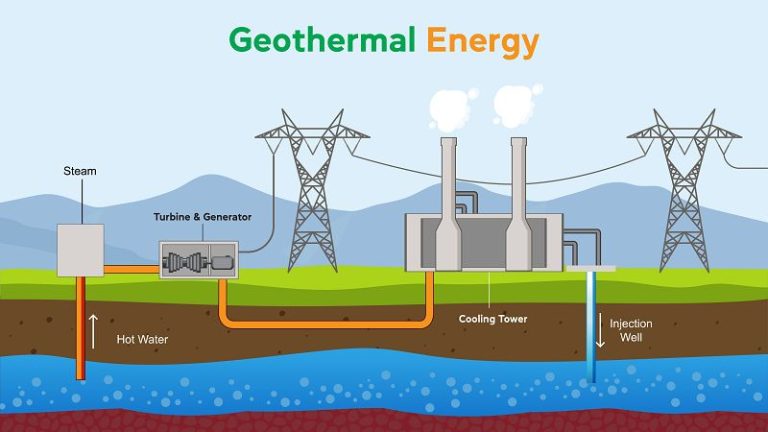Does Geothermal Originate From Sun?
What is geothermal energy?
Geothermal energy is heat derived from the Earth’s interior. The word “geothermal” originates from two Greek roots: geo meaning Earth, and therme meaning heat. Geothermal energy is a renewable source of energy that takes advantage of the heat generated and stored within the Earth (ELI: Energy: Support Materials: Geothermal Energy, 2023).
There are three main types of geothermal energy systems that can harness the Earth’s internal heat (MarineBio, 2023):
- Hydrothermal systems use naturally occurring hot water or steam reservoirs found a couple of miles or more below the Earth’s surface to drive turbines and generate electricity.
- Geopressured resources tap into extremely hot brine under high pressure deep below the Earth’s surface.
- Enhanced geothermal systems (EGS) inject water into hot dry rock to create a geothermal reservoir, allowing energy extraction even in areas without active hydrothermal resources.
The Earth’s Internal Heat
Geothermal energy originates from the heat contained within the Earth. There are two primary sources that generate this internal heat:
The first source is the continuous decay of radioactive elements such as uranium, thorium and potassium found in the Earth’s core and mantle. These elements have long half-lives and will continue emitting heat for billions of years through the process of radioactive decay. This heat gradually conducts outward from the core to the Earth’s crust.
The second source is primordial heat left over from the Earth’s initial formation around 4.5 billion years ago. In the early molten stage of the Earth’s development, gravitational compression and impacts from space debris caused immense heat. Although the planet has cooled significantly over time, a huge amount of thermal energy remains trapped underneath the crust.
How geothermal energy is generated
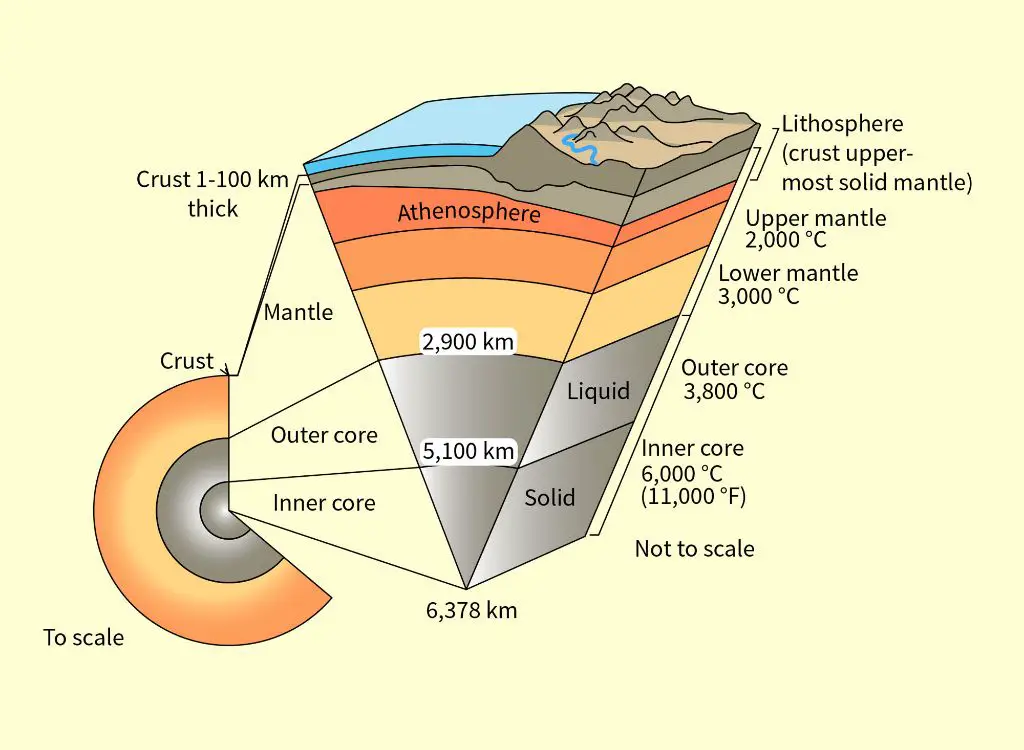
Geothermal energy is generated by harnessing heat from the Earth’s interior. This heat comes from hot rocks and aquifers located deep underground that transfer their heat to water. The process works as follows:
Water seeps down through cracks and pores in the rocks at various depths. The rocks are hotter the deeper you go – some hot enough to boil water (source: Get Your Geek On: How Geothermal Energy is Generated).
This heated water sometimes rises back up naturally in the form of hot springs, but it can also be brought back up by drilling wells into the heated rocks. The hot water that is pumped up can be used directly for heating homes and buildings. But for generating electricity, the steam from the heated water is used to turn turbines that power generators (source: Grade 8 Renewable Resources).
In this way, the natural heat within the Earth is harnessed to produce clean energy with minimal environmental impact.
Is geothermal energy renewable?
Geothermal energy is considered a renewable energy source because the heat that fuels it is constantly being replenished in the Earth’s core. The source of geothermal energy is the heat contained below the Earth’s surface, which comes from two sources: primordial heat left over from the planet’s formation and the radioactive decay of minerals (1).
The primordial heat results from the original formation of the planet, while the radioactive decay comes from isotopes like potassium-40 and thorium-232 contained in the Earth’s crust and mantle (2). These isotopes are unstable and release energy as they decay into more stable atoms over time.
This heat from radioactive decay and primordial origins is consistently produced in the Earth’s core, so geothermal energy is able to be harnessed indefinitely. Geothermal reservoirs are rarely depleted if used conservatively. In fact, geothermal energy has been used commercially for over 100 years. As long as radioactive elements continue to decay deep below the Earth’s surface, geothermal energy will remain a renewable energy source (3).
Comparing geothermal and solar energy
Geothermal energy and solar energy are both renewable energy sources, but they originate from different places. Solar energy comes directly from the sun’s rays. Technologies like solar panels and solar thermal collectors harvest sunlight and convert it into useful forms of energy like electricity and heat.
In contrast, geothermal energy comes from the heat inside the Earth. The Earth’s core is extremely hot, around 4,000-7,000°C. This heat emanates outward toward the surface, where accessible pockets of hot water and steam can be tapped for geothermal power production. So while solar power harness the sun’s energy, geothermal energy utilizes the heat originating from deep within our planet.
Both renewable resources offer clean alternatives to burning fossil fuels, but their availability depends on location. Solar energy can be harvested nearly anywhere with consistent sunlight, but geothermal energy can only be accessed where hot subsurface reservoirs are close enough to the surface. While the origins differ, both solar and geothermal provide sustainable energy options for a cleaner future.
Uses of geothermal energy
Geothermal energy has a wide variety of applications, including electricity generation, space heating, greenhouses, aquaculture and more. Some of the main uses are:
Electricity generation – Geothermal power plants use steam from reservoirs of hot water found deep underground to turn turbines and generate electricity. According to the Geothermal Energy Association, the United States leads the world in geothermal electricity generation with over 3,800 MW of installed capacity.1
Heating – Geothermal energy can be used to directly provide space heating and hot water in both residential and commercial buildings. This is done by circulating water or antifreeze solutions through pipes called ground loops that transfer heat between the building and the ground. Geothermal heat pumps are very efficient and make use of shallow ground temperatures.2
Greenhouses – Geothermal heating is ideal for greenhouses as it provides a constant and stable temperature environment needed for plant growth. Geothermal resources allow greenhouses to be located almost anywhere. In the US, the leading geothermal greenhouse state is Idaho.3
Aquaculture – Geothermal waters are used in fish farming around the world. The heat allows fish farming in colder climates. Examples can be found in Iceland, New Zealand, Hungary and the US.
Geographic distribution
Geothermal energy is not evenly distributed around the globe. It is concentrated in areas with geologic characteristics that make it abundant at relatively shallow depths. This includes places along the boundaries between tectonic plates, which are more prone to volcanism and earthquakes.
Some of the regions with the highest geothermal capacity include:
- Western United States, especially California and Nevada. The West Coast lies along the boundary between the North American and Pacific plates.
- Iceland, which sits atop the Mid-Atlantic ridge and is volcano-dotted.
- The Philippines and Indonesia, island nations within the seismically active Pacific “Ring of Fire.”
- Countries like New Zealand, Mexico, Italy and Turkey that lie in geologically active zones.
Additionally, hot spots like Yellowstone National Park in the U.S. also have abundant geothermal resources despite not being near plate boundaries. Here, a hot mantle plume pushes towards the surface.
While geothermal can be harnessed virtually anywhere by drilling deep enough, the economics are most favorable where hot rocks and aquifers are relatively close to the surface. Hence its concentration in tectonically active regions. But with improved technologies, wider geographic distribution may be possible in the future.
Environmental impacts
The environmental impacts of geothermal energy are relatively minor compared to fossil fuel power generation. According to the Union of Concerned Scientists, geothermal plants emit on average 99% less acid rain-causing sulfur compounds and 98% less smog-causing nitrogen oxides than coal plants per unit of energy produced. They also emit 97% less greenhouse gases on average.
However, there are some environmental concerns with geothermal energy. The fluids brought to the surface can contain contaminants such as sulfur, arsenic, and mercury that need to be disposed of properly. There is also a risk of small induced earthquakes and land subsidence from reservoir pressure changes. Proper siting, operation, and monitoring can minimize these risks. Overall, experts consider the environmental impacts manageable compared to other energy sources.
Sources:
[1] https://www.ucsusa.org/resources/environmental-impacts-geothermal-energy
[2] https://www.energysage.com/about-clean-energy/geothermal/environmental-impacts-geothermal-energy/
Costs
The upfront costs of developing geothermal power plants are quite high compared to other renewable energy sources like solar or wind. Drilling wells thousands of feet into the earth and building the power plant infrastructure requires major capital investment. According to EnergyMonitor, the levelized cost of geothermal energy ranges from $59-101 per megawatt-hour, while solar PV and onshore wind can be under $54 per megawatt-hour.
However, once built, geothermal plants have very low operating and maintenance costs compared to fossil fuel plants. Geothermal energy does not need to continually purchase fuel. The geothermal reservoir provides a consistent supply of heat over many decades. According to Encyclopedia Britannica, the cost of geothermal power can be competitive with other energy sources, ranging from 5-10 cents per kilowatt hour.
Government subsidies and incentives can help make geothermal power feasible in some locations by offsetting the high upfront drilling and construction costs. Overall, geothermal offers low long-term operating costs, but the initial investment may require subsidies or innovative financing models.
Future Outlook
The future of geothermal energy looks bright, as the technology is expected to grow and improve in the coming years. According to research from MIT, geothermal power could expand globally and provide a steady source of renewable base load power as fossil fuels are phased out.1 With further technological advances, the potential to extract heat from greater depths will increase. New techniques like enhanced geothermal systems (EGS) could enable geothermal projects in areas without natural hydrothermal resources.
The geothermal industry expects steady growth, with projections to double installed capacity worldwide by 2030. The United States is expected to increase geothermal production as well, providing a clean alternative to coal and natural gas for baseload power. Though geothermal has higher upfront costs than conventional sources, its ability to provide reliable electricity 24/7 with near zero emissions could make it an essential part of a sustainable energy grid. With supportive policies and research investments, geothermal may grow into a major pillar of renewable energy in the coming decades.

